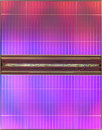Apr 16th, 2025 09:47 EDT
change timezone
Latest GPU Drivers
New Forum Posts
- The TPU UK Clubhouse (26116)
- Help me identify Chip of this DDR4 RAM (21)
- Last game you purchased? (772)
- 5070ti overclock...what are your settings? (5)
- Windows 11 fresh install to do list (23)
- How to relubricate a fan and/or service a troublesome/noisy fan. (229)
- GPU Memory Temprature is always high (16)
- Help For XFX RX 590 GME Chinese - Vbios (4)
- PCGH: "hidden site" to see total money spend on steam (3)
- Share your AIDA 64 cache and memory benchmark here (3053)
Popular Reviews
- G.SKILL Trident Z5 NEO RGB DDR5-6000 32 GB CL26 Review - AMD EXPO
- ASUS GeForce RTX 5080 TUF OC Review
- DAREU A950 Wing Review
- The Last Of Us Part 2 Performance Benchmark Review - 30 GPUs Compared
- Sapphire Radeon RX 9070 XT Pulse Review
- Sapphire Radeon RX 9070 XT Nitro+ Review - Beating NVIDIA
- Upcoming Hardware Launches 2025 (Updated Apr 2025)
- Thermaltake TR100 Review
- Zotac GeForce RTX 5070 Ti Amp Extreme Review
- TerraMaster F8 SSD Plus Review - Compact and quiet
Controversial News Posts
- NVIDIA GeForce RTX 5060 Ti 16 GB SKU Likely Launching at $499, According to Supply Chain Leak (182)
- NVIDIA Sends MSRP Numbers to Partners: GeForce RTX 5060 Ti 8 GB at $379, RTX 5060 Ti 16 GB at $429 (124)
- Nintendo Confirms That Switch 2 Joy-Cons Will Not Utilize Hall Effect Stick Technology (105)
- Over 200,000 Sold Radeon RX 9070 and RX 9070 XT GPUs? AMD Says No Number was Given (100)
- Nintendo Switch 2 Launches June 5 at $449.99 with New Hardware and Games (99)
- Sony Increases the PS5 Pricing in EMEA and ANZ by Around 25 Percent (85)
- NVIDIA PhysX and Flow Made Fully Open-Source (77)
- NVIDIA Pushes GeForce RTX 5060 Ti Launch to Mid-April, RTX 5060 to May (77)
News Posts matching #FeRAM
Return to Keyword Browsing"DRAM+" Non-Volatile Memory Combines DRAM Speed With Flash Persistence
Ferroelectric Memory Co. (FMC) and Neumonda have formed a partnership to commercialize "DRAM+," a ferroelectric (FeRAM) memory architecture combining DRAM's speed with non-volatile data retention. The technology substitutes conventional capacitors with ferroelectric hafnium oxide (HfO₂) elements, allowing persistent storage without power while maintaining nanosecond access times. This hybrid technology addresses the performance gap between high-speed DRAM and storage-class memory like NAND flash. Unlike previous European DRAM ventures from Infineon and Qimonda that failed against commodity memory economics, FMC targets specialized applications valuing persistence and power efficiency. The HfO₂-based approach resolves limitations of previous FeRAM memory implementations using lead zirconate titanate (PZT) that couldn't scale beyond megabyte capacities.
Prototypes now demonstrate gigabit-range densities compatible with sub-10 nm fabrication of traditional DRAM made by Micron, Samsung, SK Hynix, and others. By eliminating refresh cycles, DRAM+ reduces static power consumption substantially compared to traditional one-transistor/one-capacitor DRAM cells. Primary applications include AI accelerators requiring persistent model weights, automotive ECUs with immediate startup requirements, and power-constrained medical implants. Neumonda will contribute its test platform suite Rhinoe, Octopus, and Raptor for electrical characterization and analytics at lower capital costs than standard semiconductor test equipment. No production timeline has been announced for commercial DRAM+ products.
Prototypes now demonstrate gigabit-range densities compatible with sub-10 nm fabrication of traditional DRAM made by Micron, Samsung, SK Hynix, and others. By eliminating refresh cycles, DRAM+ reduces static power consumption substantially compared to traditional one-transistor/one-capacitor DRAM cells. Primary applications include AI accelerators requiring persistent model weights, automotive ECUs with immediate startup requirements, and power-constrained medical implants. Neumonda will contribute its test platform suite Rhinoe, Octopus, and Raptor for electrical characterization and analytics at lower capital costs than standard semiconductor test equipment. No production timeline has been announced for commercial DRAM+ products.

Intel Research Fuels Moore's Law and Paves the Way to a Trillion Transistors by 2030
Today, Intel unveiled research breakthroughs fueling its innovation pipeline for keeping Moore's Law on track to a trillion transistors on a package in the next decade. At IEEE International Electron Devices Meeting (IEDM) 2022, Intel researchers showcased advancements in 3D packaging technology with a new 10x improvement in density; novel materials for 2D transistor scaling beyond RibbonFET, including super-thin material just 3 atoms thick; new possibilities in energy efficiency and memory for higher-performing computing; and advancements for quantum computing.
"Seventy-five years since the invention of the transistor, innovation driving Moore's Law continues to address the world's exponentially increasing demand for computing. At IEDM 2022, Intel is showcasing both the forward-thinking and concrete research advancements needed to break through current and future barriers, deliver to this insatiable demand, and keep Moore's Law alive and well for years to come." -Gary Patton, Intel vice president and general manager of Components Research and Design Enablement
"Seventy-five years since the invention of the transistor, innovation driving Moore's Law continues to address the world's exponentially increasing demand for computing. At IEDM 2022, Intel is showcasing both the forward-thinking and concrete research advancements needed to break through current and future barriers, deliver to this insatiable demand, and keep Moore's Law alive and well for years to come." -Gary Patton, Intel vice president and general manager of Components Research and Design Enablement

Toshiba Develops World's Highest-Bandwidth, Highest Density Non-volatile RAM
Toshiba Corporation today announced the prototype of a new FeRAM -Ferroelectric Random Access Memory-that redefines industry benchmarks for density and operating speed. The new chip realizes storage of 128-megabits and read and write speeds of 1.6-gigabytes a second, the most advanced combination of performance and density yet achieved. Full details of the new FeRAM will be presented this week at the International Solid-State Circuits Conference 2009 (ISSCC2009) in San Francisco, USA.
Apr 16th, 2025 09:47 EDT
change timezone
Latest GPU Drivers
New Forum Posts
- The TPU UK Clubhouse (26116)
- Help me identify Chip of this DDR4 RAM (21)
- Last game you purchased? (772)
- 5070ti overclock...what are your settings? (5)
- Windows 11 fresh install to do list (23)
- How to relubricate a fan and/or service a troublesome/noisy fan. (229)
- GPU Memory Temprature is always high (16)
- Help For XFX RX 590 GME Chinese - Vbios (4)
- PCGH: "hidden site" to see total money spend on steam (3)
- Share your AIDA 64 cache and memory benchmark here (3053)
Popular Reviews
- G.SKILL Trident Z5 NEO RGB DDR5-6000 32 GB CL26 Review - AMD EXPO
- ASUS GeForce RTX 5080 TUF OC Review
- DAREU A950 Wing Review
- The Last Of Us Part 2 Performance Benchmark Review - 30 GPUs Compared
- Sapphire Radeon RX 9070 XT Pulse Review
- Sapphire Radeon RX 9070 XT Nitro+ Review - Beating NVIDIA
- Upcoming Hardware Launches 2025 (Updated Apr 2025)
- Thermaltake TR100 Review
- Zotac GeForce RTX 5070 Ti Amp Extreme Review
- TerraMaster F8 SSD Plus Review - Compact and quiet
Controversial News Posts
- NVIDIA GeForce RTX 5060 Ti 16 GB SKU Likely Launching at $499, According to Supply Chain Leak (182)
- NVIDIA Sends MSRP Numbers to Partners: GeForce RTX 5060 Ti 8 GB at $379, RTX 5060 Ti 16 GB at $429 (124)
- Nintendo Confirms That Switch 2 Joy-Cons Will Not Utilize Hall Effect Stick Technology (105)
- Over 200,000 Sold Radeon RX 9070 and RX 9070 XT GPUs? AMD Says No Number was Given (100)
- Nintendo Switch 2 Launches June 5 at $449.99 with New Hardware and Games (99)
- Sony Increases the PS5 Pricing in EMEA and ANZ by Around 25 Percent (85)
- NVIDIA PhysX and Flow Made Fully Open-Source (77)
- NVIDIA Pushes GeForce RTX 5060 Ti Launch to Mid-April, RTX 5060 to May (77)





